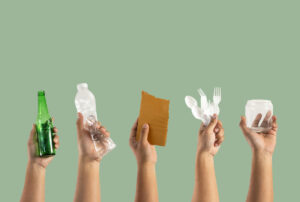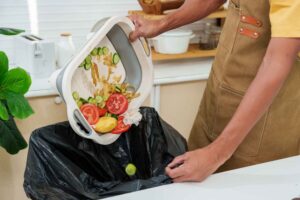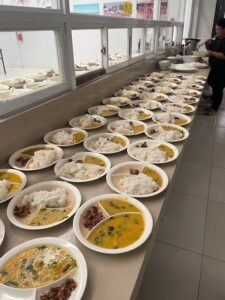Let’s look the process for recycling plastic bottles and containers – this is the last waste stream that makes up your mixed/commingled recycling.
It can be confusing working out what can be accepted as far as plastics go into the mixed recycling. The easiest thing to do is to look on the base of the item to see if it has a numbered code on it – this is called a plastics identification code. KS Environmental accepts all plastics with codes 1 – 7 and most curb side collections accept these codes too but if you are unsure check with your council. If you aren’t sure or if the item doesn’t have a code on it, please dispose of it in your general waste.
Click here for a quick reference guide on plastic identification codes.
Here’s a very basic overview of the process for recycling plastic bottles and containers.
At the materials recovery facility (MRF) the mixed recycling is separated into the different waste streams. From there the plastics are sorted according to the numbered codes, baled and sent off to be reprocessed.
- All the plastics are washed to remove labels/adhesives and any contaminants.
- The clean plastics are then shredded into flakes.
- The flakes are placed into a machine called an extruder (which looks a bit like a spaghetti maker or old style mincer).
- In the extruder the plastic is melted and pushed through the machine.
- It is then cooled and pressed through a die to convert them to pellets.
- The pellets produced are of almost the same quality as the virgin material. These pellets are now ready for remanufacturing into new products.
New products made from recycled plastics include wheelie bins, outdoor furniture, pot plants, crates composts and worm farms.
KS Environmental can offer your business a reliable collection service for recycling plastic bottles and containers and mixed recycling. If you are interested in hearing more don’t hesitate to contact us.
Sources: pacia.org.au



